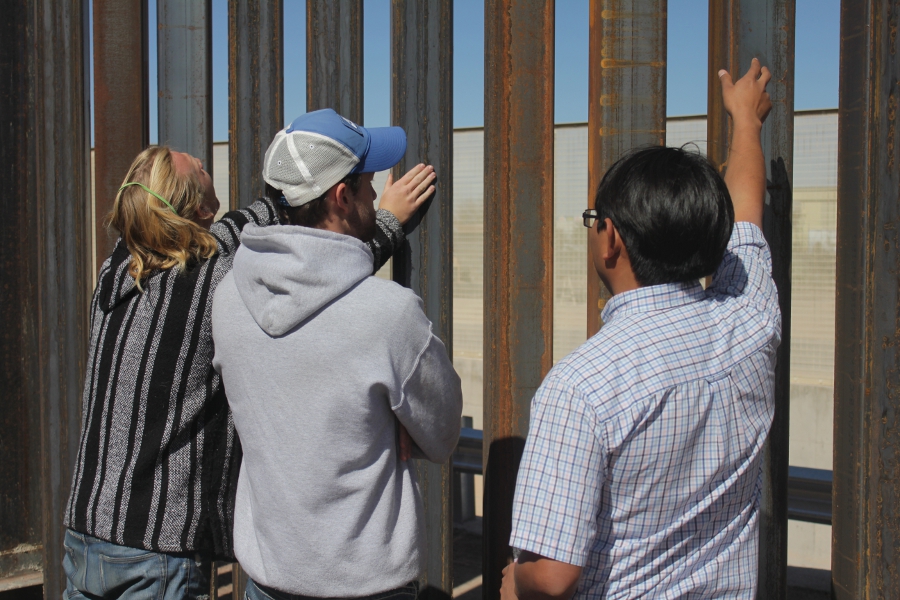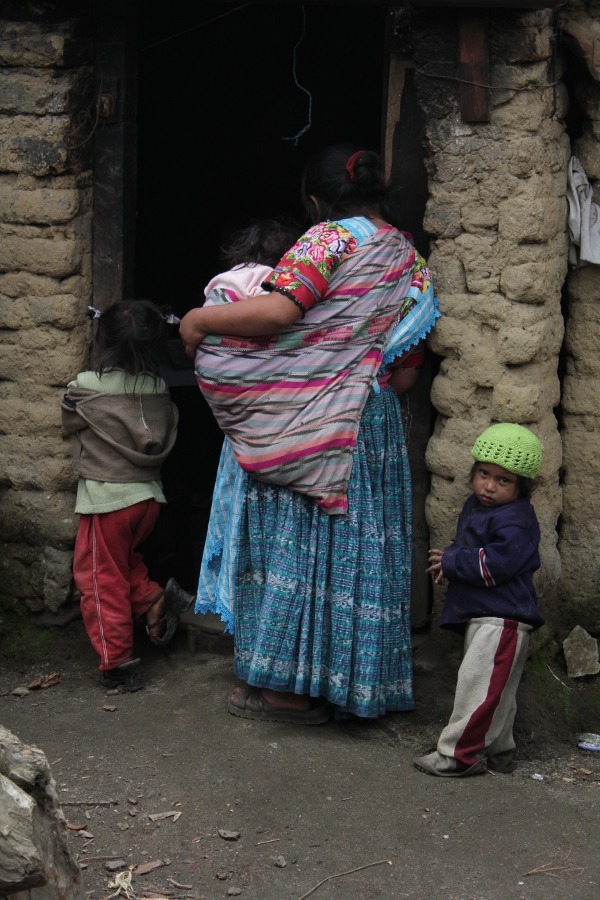 Looking through the wall at the border.
Looking through the wall at the border.
A few weeks ago, the Mexico YAGM’s crossed the border in Arizona to renew our visas. We spent a week there, learning about how the border works and a little of it’s recent history. The entire experience is too large to describe in one blog post, so perhaps I will write more later about it. The problem with the enormity of what we saw and experienced there in the desert is that it is difficult to write about. So, I will be sharing just one little thing I remember from the trip, Operation Streamline.
We came into the courtroom a little late, due to the airport like security at the entrance of the federal court building in Tucson. The judge had yet to arrive, so we sat ourselves in the small seating area for visitors in the back right corner of the room. The first thing that struck me, besides the ridiculously high ceilings, was the soft whispering of the chains. Every time one of the 70+ accused persons would shift their weight, scratch their face, or cross their legs, their movement was accompanied by the rustling of steel links. Bound with handcuffs chained around their waist and another chain that wound down to their feet, which were again enchained, there wasn’t much the migrants could do to keep their silence. Filling what was normally visitor seating on the right of the courtroom, the crowd of accused spilled over into the jury booth and occupied three tables in front of the judge. These tables sat about 9 at a time, but the were up to 15 sometimes being heard at the same time. Between the visitors and the defendants was the visitor seating reserved for public defenders, which was sparse with about 8 defenders sharing the same amount of space that 60 of the migrants fit into. The three women accused that day were separate, sitting ahead of the defenders.
One of these women had slightly darker skin than the others, and her hair looked as if she had ridden to court in the back of the truck, which wasn’t far from the truth. The room, with it’s lofty ceilings, giant wood carved seal of the DOJ, and grandiose bench seemed to press down on her shoulders. She was hunched over and furtively glanced around the space about her. Searching the faces of the other accused, as well as the visitors. It seemed to me she was searching for any presence of a friendly face. She was heard in the middle of the hearing, called up with about 8 men. The judge described their rights, as he had to every group he had called up. They had the right to remain silent, they had the right to a trial, they had the right to representation he intoned in a hurried voice, though who knows how the interpreter sounded through the headphones of the accused. Then it was explained that these rights would be waived if they plead guilty, which was the entire point of the hearing, and what might happen to them after (deportation back to their home country with brand new criminal record from the U.S.). Then one by one, he asked if they understood their rights, if they had any questions, if they plead guilty, and then the accused would respond “culpable” (‘guilty’ in Spanish). Only three people did not answer in such a manner, and the woman was one of these. Her answer was a blank stare at the judge and her defender, who had about 7-8 other clients to also worry about. The judge ordered her back to her seat so the defender could explain what was going on again.
Something about her called my mind back to my 6 weeks in Guatemala, especially the many afternoons I spent in the indigenous community outside the city, named Los Pinos (The Pines). High in the mountains, the air was crisp and clear, the sky a bright blue with barely any clouds, except those few times it drenched the green fields with rain. The roads were pitted dirt tracks and the suspensions of the old Bluebird buses from the U.S. didn’t deal very well with them, liable to throw whoever was in the back seat up into the roof. There I would walk through the cinder-block houses, their corrugated steel roofs stained black from the open fires the women would cook on. The women were the brightest part of that world, their traditional shirts a rainbow in the surrounding gray of their homes. I would arrive at the day care and spend scant few hours with the children there, their mothers busy working or cooking, their fathers working far away (80% of the men in Los Pinos were in the U.S. while I was there). I could see the women I had met, their homes with bare dirt floors, their world of tortillas, buzzing power-lines haphazardly strung to power only TVs, disintegrating plastic flip-flops, toddlers strapped to their backs, and their education that likely ended around the 4th or 5th grade.
 A Guatemalan woman and her children looking in on a meeting in Los Pinos
A Guatemalan woman and her children looking in on a meeting in Los Pinos
Then I snapped back to the trial, seeing more men accused of illegal entry shuffling up to be questioned by the judge. At the end, the woman was called up again with the other two who had not understood or had too many questions and were so delayed so as not to slow down the hearing. This time she responded the right way, though her tone of voice was unsteady. What I would give to know what she was thinking at that moment. The judge questioned her the same as all the others. Their name, where they were from, had they crossed this spot on the border at such and such a date. She had indeed from Guatemala, probably from the west of the country, where most of the population is indigenous and lives in small villages well below the poverty line. Nothing in her world could have prepared her for the grand court room in which she sat, the types of questions being asked her, the consequences of pleading guilty. All the accused before her answered identically, few asked any questions, a few even got jail time for multiple entries. How could she have known what a trial in the U.S. meant, the waiting involved, how her ‘crime’ could now be used to block her entry, however unlikely, into the U.S. legally. I don’t know the truth, but I believe all that she thought of when asked if she was guilty was going home.
More about Operation Streamline:
ACLU National Immigration Forum
Also, a brutal film about Central Americans crossing Mexico into the U.S. (WARNING, SERIOUS VIOLENCE): Sin Nombre

